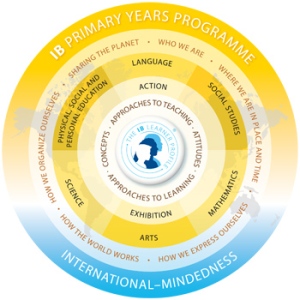I can hear the inevitable groans as another acronym is placed into the education spotlight. When you first start working with the PYP there are, admittedly, a number of terms to take on board but these are all important in order to ensure a successful implementation of the program. So, what about the new kid in town? STEAM.
I must confess that when I first started at Dwight School, New York I had never heard of the acronym STEM (now STEAM). If, like I was, you are unfamiliar with the term it refers to the integration of ‘Science, Technology, Engineering, Art + Design and Mathematics’. It is the current thinking that these subjects drive innovation. President Obama is a big advocate of the program and the White House recently stated that ‘a world-class STEM workforce is essential to virtually every goal we have as a nation — whether it’s broadly shared economic prosperity, international competitiveness, a strong national defense, a clean energy future, and longer, healthier lives for all Americans.’ This is without doubt an important component of education, and I am excited that our school has decided to embrace it.
Now we are not saying we are becoming a ‘STEAM School’ – we are, and continue to be, committed to the standards and mission of the IB. We are proud to be an IB world school. However, STEAM is an approach to teaching and learning that will truly enhance our program of inquiry. It is also a way that we can continue to strengthen and develop our links throughout all three programs we offer at school. These links are clear to see. You just have to look at the program models from the IB. Within each there are the phrases ‘approaches to teaching’ and ‘approaches to learning’.
Approaches to learning encompasses inquiry based methods and using concepts to drive student led inquiries. Approaches to teaching relates to the essential element of skills, both subject specific and transdisciplinary. These align with the MYP (Middle Years Program), DP (Diploma Program) and the newer IBCC (Career Related Certificate).
STEAM can be a way to further strengthen our programs and promote collaboration between colleagues throughout the school. This has already been the case. Staff from all three programs have come together to discuss STEAM and draft a brief statement of what it entails for our school.
However, we must not fall into the trap of thinking that ‘we use iPads, we have interactive white boards and we do science therefore we are STEAM’. It is much more than that. STEAM has four main principles: to teach inquiry-based lessons, integrate curriculum between various disciplines, emphasize project-based learning where students see the connections to workplaces, and show continuous improvement through the learning process. As a PYP Coordinator it was refreshing to see that these elements of STEAM are already woven into our challenging, engaging and relevant program of inquiry. It will be great to say to staff that this is not a new acronym to panic about but, it is a matter of recognizing/strengthening what we are already doing. From block building in Kindergarten (engineering/technology/design) to looking at architecture in grade 4 (science/technology/engineering) – we are already equipping our students with ‘STEAM skills’.
Ultimately, effective integration of STEAM (as an approach to teaching and learning) will further help equip our students with the skills needed to be ‘inquiring, knowledgeable and caring young people who help to create a better and more peaceful world through intercultural understanding and respect.’ IB Mission Statement. Those who will embrace challenge, make a positive contribution to society and who not only creatively solve problems, but pose them as well.

A great post, Chris, and one that really should help us dip into STEAM (take a STEAM bath? oh, the jokes just write themselves…) with more purpose. For background on my own thoughts on the matter, some I’ve shared at the table and some that I haven’t, here are two posts that I wrote about STE(A)M earlier this year, before Approaches to Teaching was clarified:
http://anotherthinkcoming.org/stem-just-a-bunch-of-letters/
http://anotherthinkcoming.org/approaches-to-teaching-and-outcome-based-plans-and-stem-again/
Also, I love this post by Will Richardson published just this morning on purpose and vision before technology. Great for framing our discussions, I think, whether they’re technology-driven or not:
http://willrichardson.com/post/63462544481/whats-in-your-vision